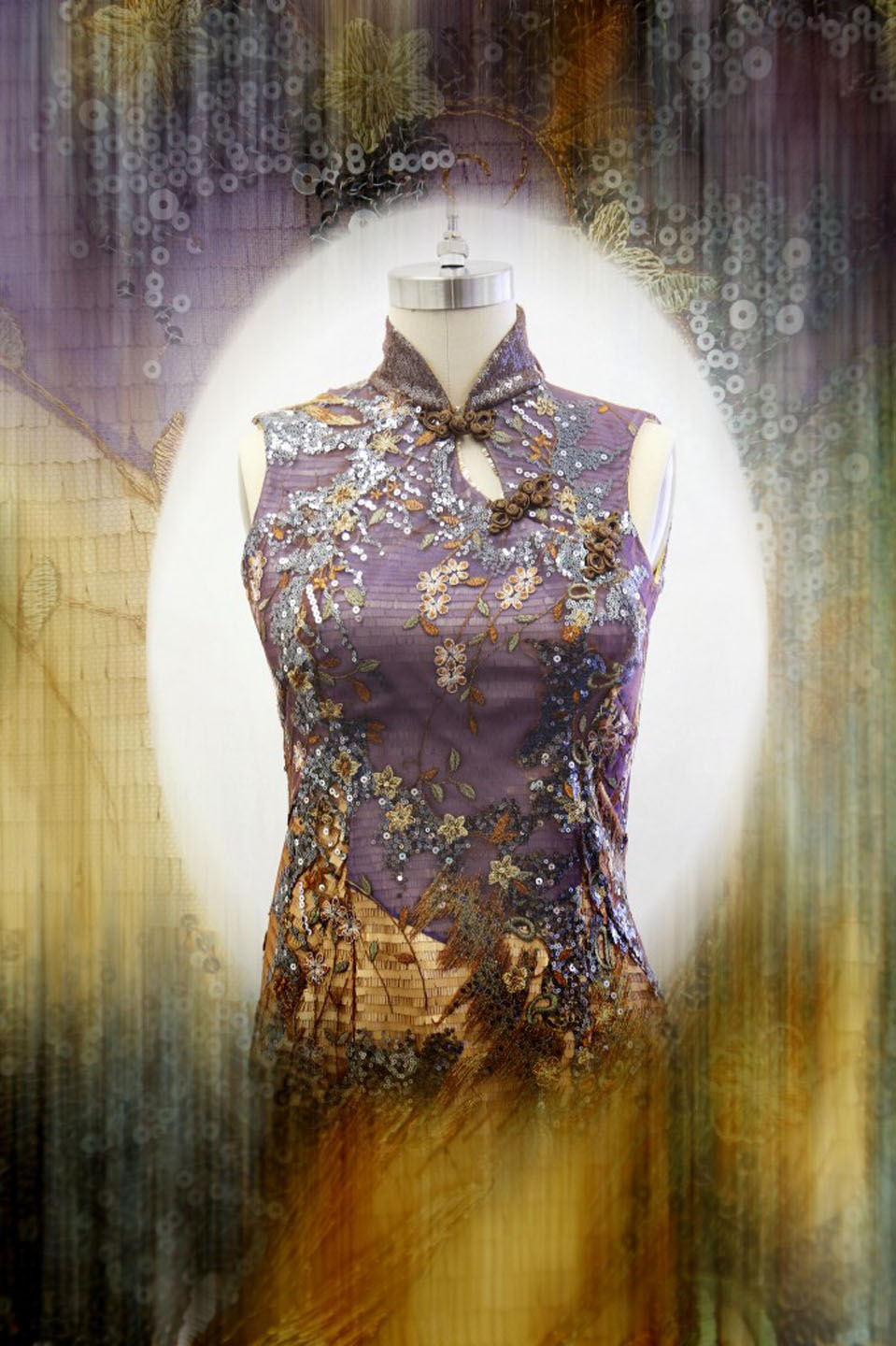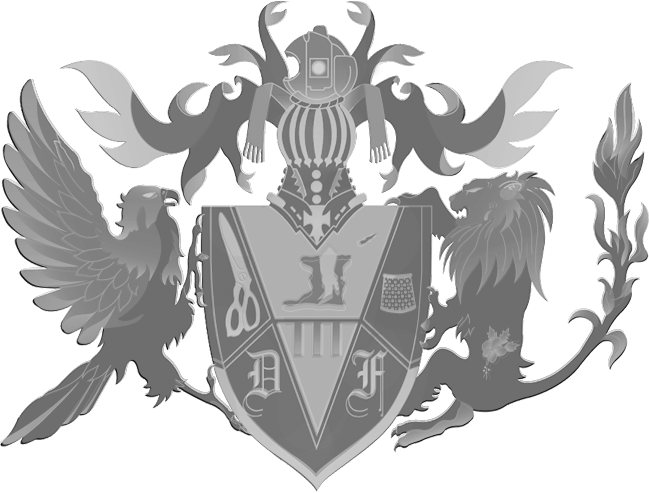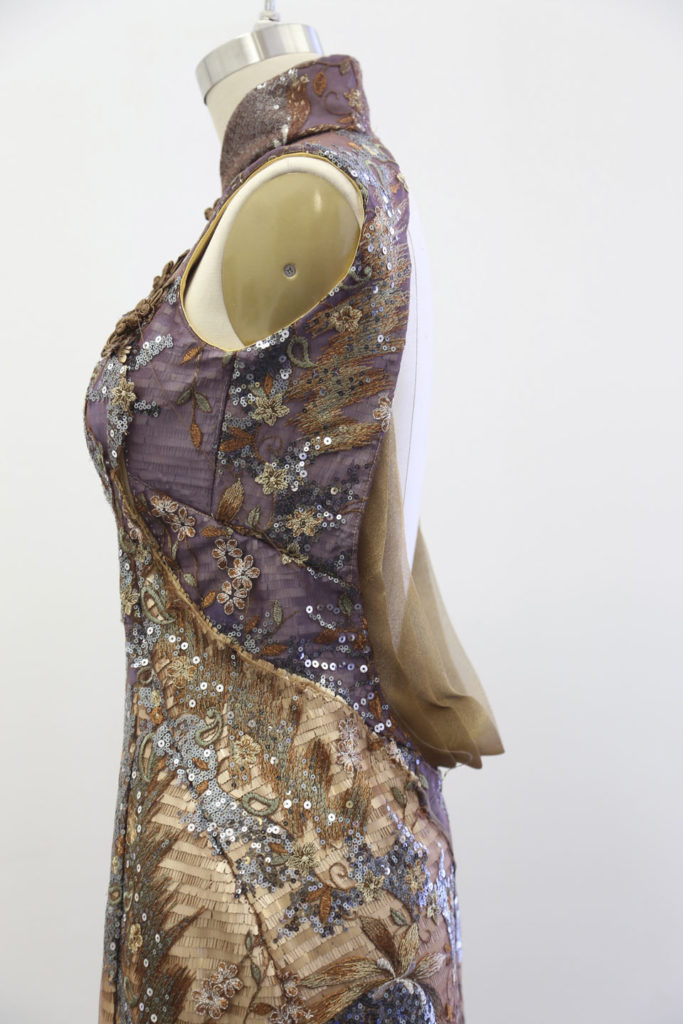
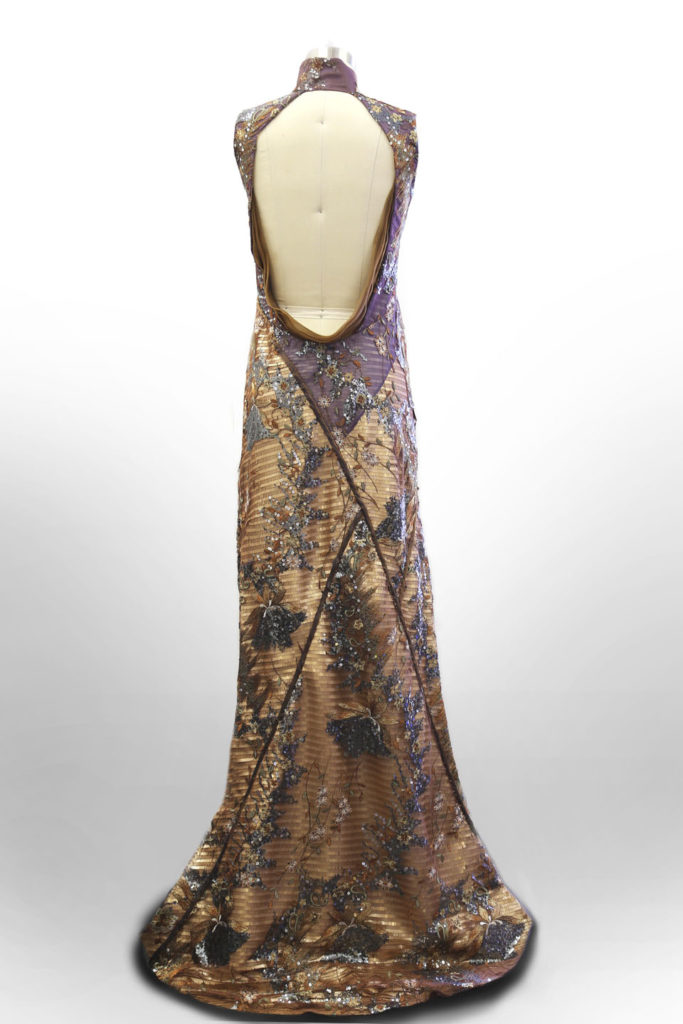
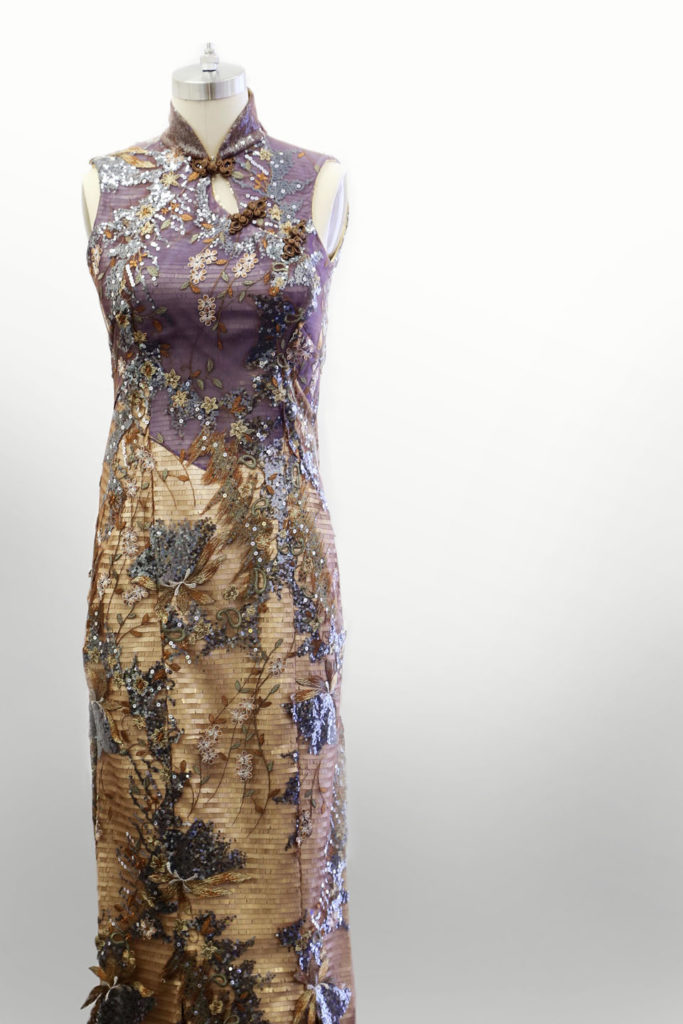
For months, new patrons touring our atelier have been asking about the dress in our workroom. Despite the dress form’s petite stature, the dress has no trouble drawing attention. Every piece of it is made with care, every part of the dress designed to be beautiful on its own as well as together as a whole. With asymmetric panels, rich purple overlays, delicate beading, a fanned out scoop back and hidden pleated panels that peek out from the split in the skirt, there is always a new detail to notice.
As many as six people have had their hands on this dress, removing tiny excess threads, stitching on sequins, securing the frog clasps and so on. This kind of work is typical of a fashion house, where a half-dozen petites mains will work on a single piece of fabric for beading and other small works for detail. In the world of bespoke, it is details like this that differentiate a mass-produced piece from a custom one.
A definite standout of this piece is the beautiful pleated panels that are revealed when the wearer walks. Our head of ladieswear created a perfect sunburst pleat for the bottom of the dress. Sunburst pleats, popularised by Marilyn Monroe’s iconic billowing white dress, are notoriously difficult to perfect. In traditional pleating houses –– a rarity in the modern age –– the fabric is placed between layers of a large metal press and “baked” for hours until permanently formed into the pleats, but we opted to create the pleats manually. After sewing the silk organza to a sheet of tracing paper in lines, our head of ladieswear folded the paper along the desired pleated lines, and then placed them in a press for a few hours. After carefully removing the stitches, she then had two sunburst pleated panels for the bottom of the dress. Though they are hardly the most visible detail on the dress, every piece of a bespoke garment must have this much attention to detail.
As our maid of honour, she sparkled at the ceremony. It is a project we are honoured to have been a part of.
